BMW i4 vs VW ID.7 Touring – Which car suits you better?
Two cars, one duel: BMW i4 meets VW ID.7 Touring.
Which one wins in performance, efficiency and value for money? Find out now!
Costs and Efficiency:
Price and efficiency are often the first things buyers look at. Here it becomes clear which model has the long-term edge – whether at the pump, the plug, or in purchase price.
VW ID.7 Touring has a slight advantage in terms of price – it starts at 47100 £, while the BMW i4 costs 49400 £. That’s a price difference of around 2310 £.
In terms of energy consumption, the advantage goes to the VW ID.7 Touring: with 14 kWh per 100 km, it’s minimal more efficient than the BMW i4 with 14.70 kWh. That’s a difference of about 0.70 kWh.
As for range, the VW ID.7 Touring performs slightly better – achieving up to 689 km, about 76 km more than the BMW i4.
Engine and Performance:
Power, torque and acceleration are the classic benchmarks for car enthusiasts – and here, some clear differences start to show.
When it comes to engine power, the BMW i4 has a significantly edge – offering 601 HP compared to 340 HP. That’s roughly 261 HP more horsepower.
In acceleration from 0 to 100 km/h, the BMW i4 is decisively quicker – completing the sprint in 3.70 s, while the VW ID.7 Touring takes 5.50 s. That’s about 1.80 s faster.
In terms of top speed, the BMW i4 performs somewhat better – reaching 225 km/h, while the VW ID.7 Touring tops out at 180 km/h. The difference is around 45 km/h.
There’s also a difference in torque: BMW i4 pulls somewhat stronger with 795 Nm compared to 679 Nm. That’s about 116 Nm difference.
Space and Everyday Use:
Beyond pure performance, interior space and usability matter most in daily life. This is where you see which car is more practical and versatile.
Both vehicles offer seating for 5 people.
In curb weight, BMW i4 is hardly perceptible lighter – 2070 kg compared to 2191 kg. The difference is around 121 kg.
In terms of boot space, the VW ID.7 Touring offers clearly perceptible more room – 605 L compared to 470 L. That’s a difference of about 135 L.
In maximum load capacity, the VW ID.7 Touring performs distinct better – up to 1714 L, which is about 424 L more than the BMW i4.
When it comes to payload, BMW i4 hardly perceptible takes the win – 480 kg compared to 465 kg. That’s a difference of about 15 kg.
Who wins the race?
The BMW i4 proves to be leaves the rival little chance and therefore becomes our DriveDuel Champion!
BMW i4 is the better all-rounder in this comparison.

BMW i4
BMW i4
The BMW i4 beautifully merges the dynamism of a saloon with the efficiency of an electric vehicle, offering a truly exhilarating driving experience. Its design seamlessly blends elegance and athleticism, highlighting BMW's dedication to both aesthetics and performance. Inside, the i4 boasts a high-tech cockpit that harmonises luxury with intuitive technology, allowing drivers to stay connected while on the move.
details @ press.bmwgroup.com
@ press.bmwgroup.com
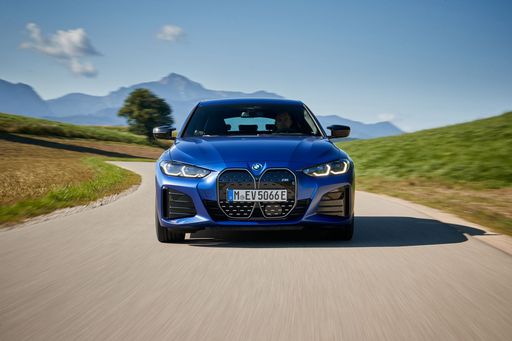 @ press.bmwgroup.com
@ press.bmwgroup.com
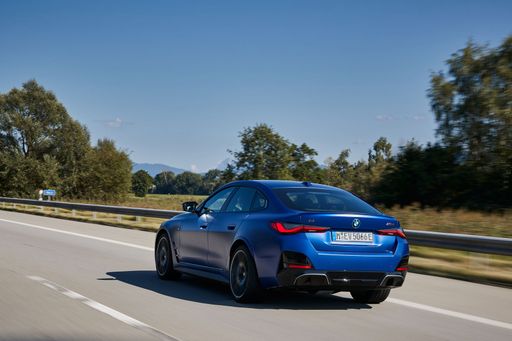 @ press.bmwgroup.com
@ press.bmwgroup.com
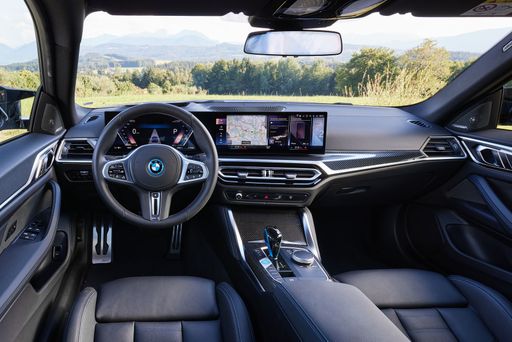 @ press.bmwgroup.com
@ press.bmwgroup.com
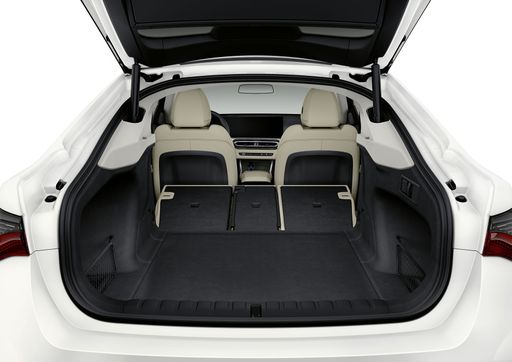 @ press.bmwgroup.com
@ press.bmwgroup.com
VW ID.7 Touring
The VW ID.7 Touring represents a new chapter in Volkswagen's electric vehicle lineup, offering a seamless blend of style and sustainability. This estate car is designed to provide ample space and comfort for both passengers and luggage, making it ideal for long journeys. With advanced technology features and a focus on eco-friendly performance, the ID.7 Touring is set to appeal to environmentally conscious drivers who don’t want to compromise on practicality or luxury.
details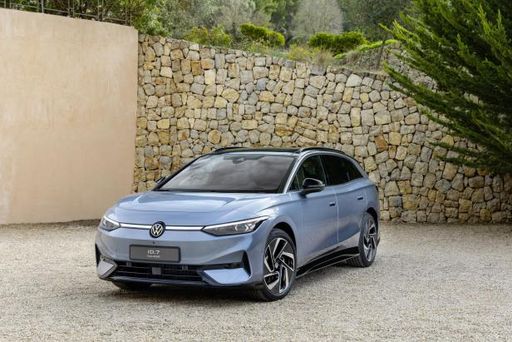 @ Volkswagen
@ Volkswagen
 @ Volkswagen
@ Volkswagen
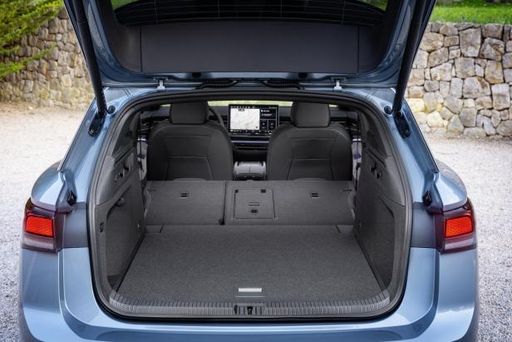 @ Volkswagen
@ Volkswagen

|
 @ Volkswagen
@ Volkswagen
|
|
|
|
Costs and Consumption |
|
|---|---|
|
Price
49400 - 62500 £
|
Price
47100 - 54900 £
|
|
Consumption L/100km
-
|
Consumption L/100km
-
|
|
Consumption kWh/100km
14.7 - 16.7 kWh
|
Consumption kWh/100km
14 - 16.6 kWh
|
|
Electric Range
514 - 613 km
|
Electric Range
584 - 689 km
|
|
Battery Capacity
67.1 - 81.3 kWh
|
Battery Capacity
77 - 86 kWh
|
|
co2
0 g/km
|
co2
0 g/km
|
|
Fuel tank capacity
-
|
Fuel tank capacity
-
|
Dimensions and Body |
|
|---|---|
|
Body Type
Hatchback
|
Body Type
Estate
|
|
Seats
5
|
Seats
5
|
|
Doors
5
|
Doors
5
|
|
Curb weight
2070 - 2285 kg
|
Curb weight
2191 - 2336 kg
|
|
Trunk capacity
470 L
|
Trunk capacity
605 L
|
|
Length
4783 mm
|
Length
4961 mm
|
|
Width
1852 mm
|
Width
1862 mm
|
|
Height
1448 mm
|
Height
1549 - 1551 mm
|
|
Max trunk capacity
1290 L
|
Max trunk capacity
1714 L
|
|
Payload
445 - 480 kg
|
Payload
459 - 465 kg
|
Engine and Performance |
|
|---|---|
|
Engine Type
Electric
|
Engine Type
Electric
|
|
Transmission
Automatic
|
Transmission
Automatic
|
|
Transmission Detail
Reduction Gearbox
|
Transmission Detail
Reduction Gearbox
|
|
Drive Type
Rear-Wheel Drive, All-Wheel Drive
|
Drive Type
Rear-Wheel Drive, All-Wheel Drive
|
|
Power HP
286 - 601 HP
|
Power HP
286 - 340 HP
|
|
Acceleration 0-100km/h
3.7 - 6 s
|
Acceleration 0-100km/h
5.5 - 6.7 s
|
|
Max Speed
190 - 225 km/h
|
Max Speed
180 km/h
|
|
Torque
400 - 795 Nm
|
Torque
545 - 679 Nm
|
|
Number of Cylinders
-
|
Number of Cylinders
-
|
|
Power kW
210 - 442 kW
|
Power kW
210 - 250 kW
|
|
Engine capacity
-
|
Engine capacity
-
|
General |
|
|---|---|
|
Model Year
2025
|
Model Year
2024
|
|
CO2 Efficiency Class
A
|
CO2 Efficiency Class
A
|
|
Brand
BMW
|
Brand
VW
|
What drivetrain options does the BMW i4 have?
The BMW i4 is available as Rear-Wheel Drive or All-Wheel Drive.
The prices and data displayed are estimates based on German list prices and may vary by country. This information is not legally binding.
